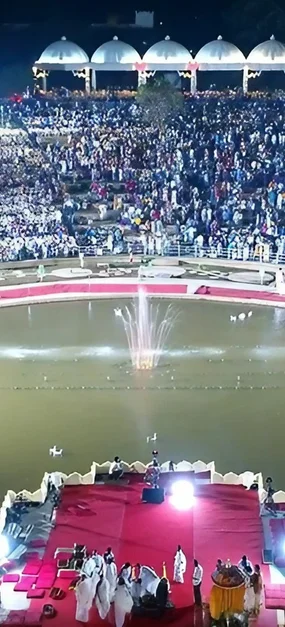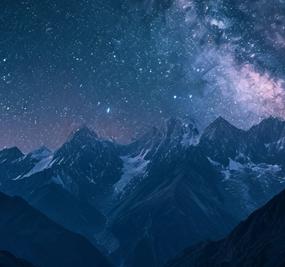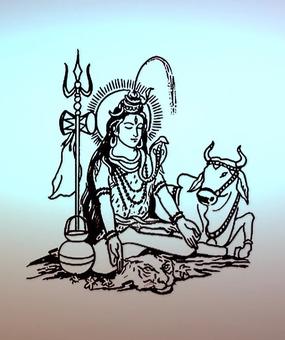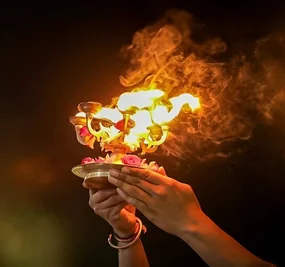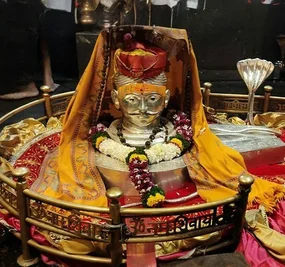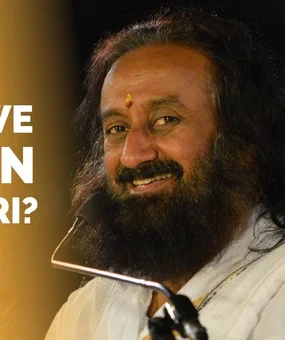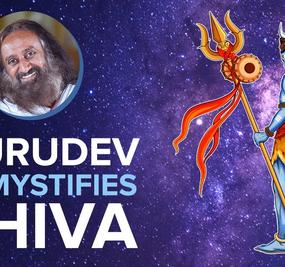Jyotirlingas are unique representations of Lord Shiva. Jyoti means ‘light’ and linga means ‘mark, a sign’. Jyotirlinga means the ‘Radiant sign of Lord Shiva’.

Legend behind jyotirlingas
Once, Lord Brahma and Lord Vishnu had an argument as to who was the supreme creator. To settle this argument, Lord Shiva appeared as a huge pillar of light and asked them to find the end of the pillar. Neither could find the end. The above legend of a pillar of light finds expression in the jyotirlinga temples where Lord Shiva manifested as a linga of light.

12 Jyotirlingas in India
There are total 12 jyotirlingas in the country and they are all sacred sites for the Hindus. Every jyotirlinga has a different story behind how it came to be. There is a Sthala Purana (local folklore or legends) attached to each.
1. Somnath – Gujarat
Somnath jyotirlinga is located at Prabhas Patan in the Saurashtra region of Gujarat. Once, the moon deity was cursed by Prajapati Daksha to lose his luster. He then undertook severe penance to Lord Shiva, to free himself from the curse. Lord Shiva appeared before him and mitigated the curse. The moon was allowed to wax and wane over a fortnight every month. The moon god, being grateful, established a jyotirlinga in honour of Lord Shiva. This jyotirlinga was named Somnath, meaning “the Lord of the moon”.
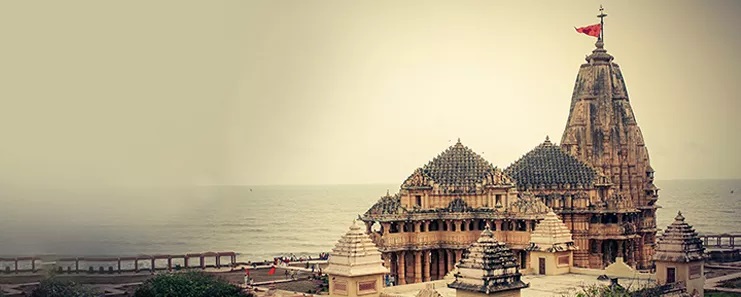
2. Mallikarjuna – Andhra Pradesh
Mallikarjuna jyotirlinga is located at Srisailam in Andhra Pradesh. Once Lord Karthikeya was upset with his parents – Shiva and Parvati, for what he thought was unfair treatment meted out to him. He left Kailash and came down south to reside at Srisailam mountain. His parents followed him and lived in disguise among the tribals in the vicinity of their son. When Lord Karthikeya came to know about this, he worshipped his parents and established a jyotirlinga at Srisailam. This form of Lord Shiva which manifested on the banks of Krishna river was known as Arjuna, while Mother Parvati was called Mallika. The jyotirlinga was given the combined name Mallikarjuna.
3. Mahakaleshwar – Madhya Pradesh
Mahakaleshwar jyotirlinga is situated in the historical city of Ujjain in Madhya Pradesh. In ancient times, Ujjain was ruled by King Chandrasen who was a great devotee of Lord Shiva. In that period, Ujjain was attacked by kings from rival kingdoms. The enemies had almost taken control of the city when King Chandrasen and other devotees made repeated pleas to Lord Shiva to save them from defeat and destruction. Lord Shiva appeared just in the nick of time in his Mahakala form and annihilated the enemies of King Chandrasen. On the request of the king and other devotees, Lord Shiva agreed to manifest himself as Mahakaleshwar jyotirlinga in Ujjain. He is the Lord of Time.
4. Omkareshwar – Madhya Pradesh
Omkareshwar jyotirlinga is situated at the Mandhata island on Narmada river in Madhya Pradesh. This island is named so as King Mandhata had performed penance here to win the favor of Lord Shiva. Lord Shiva had then manifested before him in the form of this jyotirlinga. The Mandhata island is in the shape of Om and this jyotirlinga became known as Omkareshwar. He is the Lord of Omkar (Om vibration)
5. Kedarnath – Uttarakhand
Kedarnath jyotirlinga is located high up in the Himalayas in Uttarakhand. After the Mahabharata war, the Pandavas had performed penance to please Lord Shiva and seek his pardon for the wrongdoings committed during the war. Lord Shiva, however, didn’t reveal himself easily to the Pandavas. The Lord assumed the form of a bull and hid beneath the field, under the ground. He eventually only gave a glimpse of himself at a spot where a jyotirlinga was later installed by the Pandava brothers. Kedar means field and this jyotirlinga was called Kedarnath as Lord Shiva had hidden himself in the field. He is the Lord (nath) of the field.
6. Bhimashankar – Maharashtra
Bhimashankar jyotirlinga is located at Bhorgiri village, near Pune,in Maharashtra. Bhima was the son of Ravana’s brother, Kumbhakarna who was slayed by Lord Rama. In order to avenge his father’s death, he propitiated Lord Brahma and received many powerful boons. The demon began wreaking havoc all across the world. Meanwhile, Kamrupeshwar, an ardent Shiva devotee, was worshipping a Shiva linga. When Bhima attempted to destroy this linga, the Lord manifested from the linga and reduced Bhima to ashes. The gods and the sages then requested Lord Shiva to manifest himself as a jyotirlinga at the place where he had vanquished Bhima which came to be known as Bhimashankar.
7. Vishwanath jyotirlinga – Uttar Pradesh
Vishwanath jyotirlinga is located in Kashi, Uttar Pradesh. As per the legend, Lord Shiva showed his supremacy over all the other gods, manifesting as a pillar of light at Kashi, by breaking through the earth’s crust and rising infinitely towards the skies. He was then hailed as the Lord of the universe (Vishwanath) by all the celestials. A jyotirlinga was installed at the spot where Lord Shiva had revealed his glory. There are many other legends associated with this jyotirlinga.
8. Trimbakeshwar jyotirlinga – Maharashtra
Trimbakeshwar jyotirlinga is situated near Nasik in Maharashtra. Sage Gautama and his wife resided here once upon a time. He had been graced by Lord Varuna with a bottomless pit, with inexhaustible supply of food grains. The other rishis became jealous of Gautama’s penance and prosperity. They made an illusory cow perish at his ashram and pinned the blame on Gautama to defame him. Gautama then propitiated Lord Shiva to bring Ganga to his ashram to purify the place. Lord Shiva manifested before the rishi and requested Ganga to flow by his ashram. This is the Godavari river. On the request of Gautama rishi and others, Lord Shiva manifested himself as a jyotirlinga with the name Trimbakeshwar, by the river. He is the three eyed Lord (trimbaka).
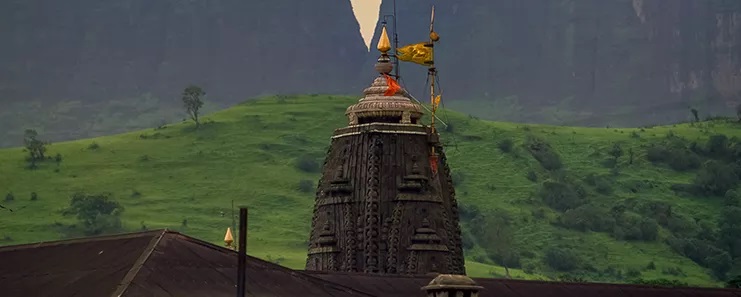
9. Vaidyanath jyotirlinga – Jharkhand
Vaidyanath jyotirlinga is located at Deoghar district in Jharkhand. Lord Shiva, being mightily pleased with Ravana’s penance, had offered him a jyotirlinga to be installed in Lanka which would make him invincible in all the three worlds. The Lord however warned Ravana that while taking the linga to Lanka, he shouldn’t, for any reason, place it on the ground. On the way to Lanka from Kailash, Ravana felt a little drowsy and wanted to rest. He gave the linga to a small boy nearby to hold for a few minutes. The boy wasn’t able to bear its weight and placed it on the ground. It stuck to the ground forever as Ravana was unable to lift it again. This linga became the Vaidyanath jyotirlinga. He is the Lord of physicians (vaidya).
10. Nageshwar jyotirlinga – Gujarat
Nageshwar jyotirlinga is located in Dwarka district of Gujarat. A demon by the name Daruka had imprisoned Supriya, a Shiva devotee in a city under the sea which was inhabited by sea serpents. In the prison, Supriya and other devotees called upon Lord Shiva by chanting his mantra continuously. Lord Shiva appeared there and vanquished the demon, rescuing all his devotees. He then installed himself on the seaside at Dwarka as Nageshwar jyotirlinga. He is the lord of all serpents (naga).
11. Rameshwaram jyotirlinga – Tamil Nadu
Rameshwaram jyotirlinga is located near the southern tip of India in Tamil Nadu. This linga was installed by Lord Rama himself, seeking the blessings of Lord Shiva in his battle against Ravana. He is the Lord revered by Rama.
12. Grishneshwar jyotirlinga – Maharashtra
Grishneshwar jyotirlinga is situated in Aurangabad district of Maharashtra. Kusuma was a very pious woman devoted to Lord Shiva. She used to worship her Lord everyday by immersing the shiva linga in a pond, as part of the daily ritual. Her husband had another wife who became jealous of Kusuma due to her increasing reputation in the society. In a fit of rage arising from bitterness, she killed Kusuma’s only son. Kusuma became really depressed on hearing that her son had been murdered, but continued to offer worship to Lord Shiva. Lord Shiva was immensely pleased by her equanimous devotion and as soon as Kusuma immersed the shivalinga in water, her son came back to life. Lord Shiva then showed himself to Kusuma and the villagers. On Kusuma’s prayers, Lord Shiva manifested himself as a jyotirlinga which came to be known as Grishneshwar, meaning the Lord of compassion (Grishna).
Aim of establishing the jyotirlingas in different parts of the country
The people of India speak different languages. If in Kashi, people speak one language, people in Rameshwaram speak another. In ancient times, people were asked to first visit Rameshwaram, and from there, they had to go on a pilgrimage to Kashi and bathe in the holy Ganga. After that they had to bring back the holy water of the Ganga from Kashi to Rameshwaram and offer it to the jyotirlinga there. And after that, they were told to take the offering back to the Kashi Vishwanath temple.
The intention behind doing this in ancient times was to bring a sense of national unity by making people visit these holy shrines situated in different parts of the country. When people undertake pilgrimages together to different parts of the country, they establish bonds of friendship with one another.
Gurudev Sri Sri Ravi Shankar has said, “Whenever we do anything with a sense of sacredness and purity, our entire consciousness starts blossoming. That is why all the 12 jyotirlingas were never kept in one place or one state. Some were in the North, some in the South, some in the West – they were distributed all over.”
Unifying the nation
And in those days, these locations of jyotirlingas were not easy to travel to. It used to be very difficult to get there. One had to pass through dense forests, dangerous valleys, city ruins or snow capped mountains, to reach these shrines. For example, Kedarnath is situated high in the Himalayan range. In this way, by establishing sacred shrines dedicated to Lord Shiva in different parts of the country, the holy sages and saints of those days built a unified nation.
Jyotirlinga pilgrimage route
Now that you know about the significance of the jyotirlingas and the story behind each one of them, are you planning to go on a pilgrimage of the jyotirlingas? Are you a little confused on how to plan your journey? No worries, as we have a sequence for you based on where you are situated.
From North India
If you are living in the North, Kedarnath in Uttarakhand will be your first destination. From here, you travel to Kashi Vishwanath in Uttar Pradesh and Vaidyanath in Jharkhand. Subsequently, you move eastwards to Omkareshwar and Mahakaleshwar in Uttar Pradesh. Now, travel to Nageshwar and Somnath in Gujarat. From thereon, move on to Maharashtra where you visit Grishneshwar, Bhimashankar, and Trimbakeshwar in that order. After this, make your way to Mallikarjuna in Andhra Pradesh and finally to Rameshwarm in Tamil Nadu, where your pilgrimage ends.
Jyotirlinga route for you: Kedarnath – Kashi Vishwanath – Vaidyanath – Omkareshwar – Mahakaleshwar – Nageshwar – Somnath – Grishneshwar- Bhimashankar- Trimbakeshwar – Mallikarjuna – Rameshwaram
From South India
For those living in the South, Rameshwaram in Tamil Nadu will be your first destination. From here, you move on to Mallikarujuna in Andhra Pradesh. Now, move westwards to Maharashtra, which has three jyotirlingas. Bhimashankar will be your first destination here, followed by Grishneshwar and Trimbakeshwar. Subsequently, you travel to Madhya Pradesh, which is home to Omkareshwar and Mahakaleshwar. From here, Gujarat is very close by, where you visit Nageshwar and Somnath. From Gujarat, your trip takes you right up into the Himalayas to Kedarnath in Uttarakhand. Kashi Vishwanath in Uttar Pradesh and Vaidhyanath in Jharkhand will be your final destinations in that order, before heading back home.
Jyotirlinga route for you: Rameshwaram – Mallikarjuna – Bhimashankar – Grishneshwar – Trimbakeshwar – Omkareshwar – Mahakaleshwar – Somnath – Nageshwar – Kedarnath – Kashi Vishwanath – Vaidyanath
From West India
If you are situated in the West, then visit all the three jyotirlingas in Maharashtra, namely, Trimbakeshwar, Bhimashankar, and Grishneshwar in that order. Now, make your way to Nageshwar and Somnath in Gujarat. From here, you travel to Omkareshwar and Mahakaleshwar in Madhya Pradesh. After this, visit Kedarnath in Uttarakhand. Then, come down to Kashi Vishwanath in Uttar Pradesh and from thereon to Vaidhyanath in Uttarakhand. Your journey will now take you southwards to Mallikarjuna in Andhra Pradesh and finally to Rameshwaram in Tamil Nadu, before making your way back home.
Jyotirlinga route for you: Trimbakeshwar – Bhimashankar – Grishneshwar- Somnath – Nageshwar – Omkareshwar – Mahakaleshwar – Kedarnath – Kashi Vishwanath – Vaidyanath – Mallikarjuna – Rameshwaram
From West India For those starting from the East, Vaidyanath in Jharkhand will be your first stopover. From here, travel to Kashi Vishwanath in Uttar Pradesh, and from thereon to Kedarnath in the Himalayas. Your next destination is Mahakaleshwar and Omkareshwar in Madhya Pradesh. From here, you move on to Nageshwar and Somnath in Gujarat. Subsequently, travel to Maharashtra to cover Grishneshwar, Bhimashankar, and Trimbakeshwar in that order. From here, the last leg of your pilgrimage will be Mallikarjuna in Andhra Pradesh, and finally Rameshwaram in Tamil Nadu, before making your journey back home.
Jyotirlinga route for you: Vaidyanath – Kashi Vishwanath – Kedarnath – Mahakaleshwar – Omkareshwar – Somnath – Nageshwar – Grishneshwar – Bhimashankar – Trimbakeshwar – Mallikarjuna – Rameshwaram
Seven Jyotirlingas Together
Of the 12 jyotirlingas, seven are situated very close to each other in the neighboring states of Gujarat, Madhya Pradesh, and Maharashtra, and which include:
- Somnath – Gujarat
- Nageshwar – Gujarat
- Mahakaleshwar – Madhya Pradesh
- Omkareshwar – Madhya Pradesh
- Grishneshwar – Maharashtra
- Bhimashankar – Maharashtra
- Trimbakeshwar – Maharashtra
These jyotirlingas can be covered very easily due to their proximity to each other. Similarly, Kedarnath, Kashi Vishwanath, and Vaidyanath are comparatively closer to each other and can be covered together. The South has two jyotirlingas, namely Mallikarjuna and Rameshwaram.



